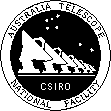

ATUC Meeting
Triennium Funding - Science Case
at the ATNF in Epping, Sydney
- March 23, 1999 -
7mm Receivers for the AT Compact Array
In general terms this band, covering 30-50GHz, will offer the observer access to a number of transitions of molecules like SO, SO2, SiS, C2S, SiC4, OCS, SiO, CS, C3H2, HDS, H2S, methanol (CH3OH) (and their isotopes) and a large number of carbonhydrates (like CH3OCH3, CH3CH2OH etc). Furthermore, this band is suited to access medium (z=1-3) and high (z=3-5) redshifted lines of CO, HCO+, HCN, hydrogen recombination lines etc. It should be pointed out that a large number of lines in this part of the spectrum have not been identified and conversely the 7mm transitions of many molecules have not been calculated. Most of these transitions trace different temperature and density regimes of the interstellar medium. Other transitions, like methanol (CH3OH) and SiO give detailed information on the kinematics of the stellar disks, stellar jets and stellar envelopes.Furthermore, the 7mm band is widely used as a continuum band for short and long-baseline arrays to measure the structure of jets and accretion disks in the inner parts of active galactic nuclei, as well as for studies of galactic objects like flare stars, stellar winds from hot stars and supernova remnants.
An interferometer operating in the frequency band 26-36 GHz (the DASI project) is expected to become operational at the South pole around November 1999; this experiment expects to measure the degree scale CMB anisotropy with a sensitivity of about 10 micro Kelvin. The greatest limitation to this endeavor is the contamination from discrete foreground synchrotron sources which are expected to contribute an rms anisotropy at the level of about 2-4 micro Kelvin. The ATCA, equipped with 30 GHz receivers, could survey the same sky areas observed by DASI and identify the discrete sources for removal from the data. Precise measurements of the CMB anisotropy spectrum on degree scales are important for discriminating between models for structure formation and the evolution of the primordial gas.
Surveys in the sub-mm with SCUBA and near-IR with the HST NICMOS have revealved the presence of enshrouded massive star-formation in very distant galaxies. Recent discovery of high redshift (z>2) starburst galaxies with significant mass fraction in enriched molecular form has opened a new window to the exploration of the high-redshift universe. A hot research thrust for the next decade will be the investigation of these early galaxies in their redshifted molecular line emission.
It may be noted here that the galactic molecular lines of special interest are located at the upper part of the 30-50 GHz band where as the identification of discrete sources for the DASI project requires observations around 30 GHz. A wide band receiver would serve for Galactic molecular studies, the CMB experiment and, perhaps most importantly, for studies of redshifted molecular lines from cosmological starburst systems.
The cost estimate for a full wide band 7-mm system (7 off) is quoted at 1075 k$ in the AT future development table. It is also estimated to require 12 mn-yr. I believe the incremental cost per receiver is about 150 k$.
Ravi Subrahmanyan
25 February 1999
